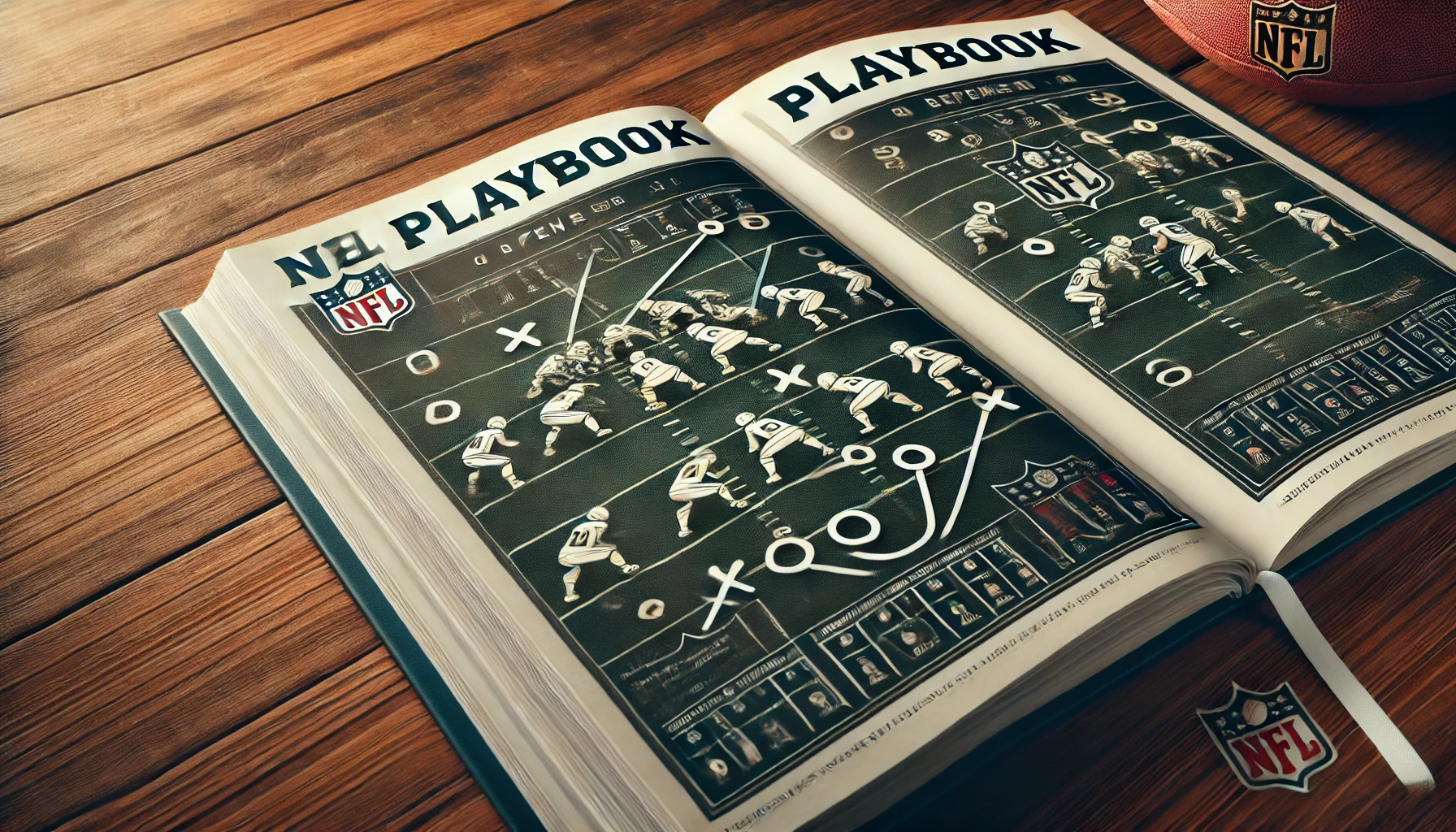Introduction
In the fast-paced world of NFL Playbook, the playbook is the ultimate guide to success. Every team, every coach, and every player relies on this essential document to navigate the intricacies of the game. It contains a detailed compilation of offensive, defensive, and special teams plays that provide a structured approach to game strategy. Understanding the NFL playbook is critical not only for coaches but also for players, as it shapes the team’s performance on the field.
In this article, we’ll take a deep dive into the NFL playbook: its structure, how it’s used to create winning strategies, and its significance for players and coaches alike. From offensive schemes to defensive formations, we’ll explore how the playbook acts as the blueprint for success. By the end, you’ll have a comprehensive understanding of the powerful role the NFL playbook plays in shaping the outcome of games.
What is an NFL Playbook?
An NFL playbook is a detailed collection of football plays, strategies, and formations used by a professional team to guide their tactics during games. The NFL Playbook serves as the foundation of a team’s strategy and gives players the necessary tools to execute successful plays on the field. Whether it’s a complex passing route or a simple running play, each move is carefully outlined and explained in the NFL Playbook
A typical NFL Playbook will include a variety of sections, covering everything from offensive plays to defensive formations and special teams strategies. It often breaks down each play by its position, and every player knows their responsibility in executing the play. This comprehensive guide also includes diagrams that visually represent the movement of players during specific plays. Coaches and players continuously refer to the playbook to study and prepare for different game scenarios, and it’s updated throughout the season to incorporate new strategies or counter-opposing team tactics.
The playbook is essential for game preparation and in-game decision-making. It’s a team’s strategic tool for understanding and overcoming the opponent’s defense while maximizing their own offensive potential. The creativity and flexibility embedded in the playbook often determine the team’s success, as it allows the coach to tailor the game plan to each opponent and each situation.
The Structure of an NFL Playbook
An NFL playbook can be divided into three primary categories: offensive, defensive, and special teams. Each section serves a unique purpose and is vital for the team’s overall performance.
Offensive Playbook: Passing and Running Plays
The offensive playbook is arguably the most complex section of the entire playbook, as it includes every possible strategy designed to move the ball toward the opponent’s end zone. The plays here are categorized based on the type of play, such as running plays, passing plays, and screen passes. For example, a running play may include formations like I-formation, shotgun, or single back, with specific instructions on how to block, where the running back should go, and the quarterback’s role in handing off the ball.
Passing plays are also crucial in modern NFL offenses, with intricate routes designed for wide receivers and tight ends. The playbook will detail various route combinations, such as slants, fades, curls, and post routes. Each route requires specific timing, chemistry, and precision to succeed, making the passing section one of the most critical parts of the playbook.
Defensive Playbook: Key Defensive Strategies and Formations
On the defensive side, the playbook focuses on strategies and formations designed to stop the opposing offense from scoring. These include the 3-4, 4-3, and nickel defenses, among others. A defensive playbook will explain how players need to align themselves based on the opposing offense’s formation, and the types of coverage (man-to-man, zone, or mixed) that will be implemented.
The defensive playbook also includes specific tactics for defending against the run, pass, and special situations like goal-line stands. These plays often involve more reactive strategies, where defenders read the offensive plays and adjust accordingly. The defensive playbook allows the coach to tailor the defense to the strengths and weaknesses of the opposing team.
Special Teams Playbook: Kicking and Return Strategies
The special teams playbook is often an overlooked part of the NFL playbook, but it can play a pivotal role in the outcome of a game. This section focuses on strategies for kicking, punting, and returning kicks. It includes plays like onside kicks, field goal attempts, and punt returns, which often require highly specific strategies and precision.
Special teams can significantly alter the momentum of a game, especially in tight situations. Successful special teams plays can lead to sudden scoring opportunities or critical field position changes, making this section an essential component of a winning team’s playbook.
How NFL Teams Use the Playbook to Gain a Competitive Edge
The true power of the NFL playbook lies in its ability to help teams adapt to different opponents and situations. A team’s playbook isn’t just about executing a set of standard plays; it’s about being flexible and creative with those plays, adjusting them as the game progresses. Teams that can make quick adjustments based on the playbook’s guidelines are often the ones that come out victorious.
Game Preparation and In-Game Adjustments
Before each game, coaches and players spend countless hours studying the opposing team’s playbook, identifying potential weaknesses, and tailoring their strategies accordingly. Coaches may highlight specific plays or formations that they believe will work well against the opposing defense. They may also introduce new tactics that have not been seen before, catching the opponent off guard.
During the game, the playbook serves as the reference point for making adjustments. If one strategy isn’t working, the coach can quickly switch to a different play that they’ve prepared in advance. This ability to adapt on the fly is what often separates the best teams from the rest. Teams with a well-organized and versatile playbook are better equipped to handle the unpredictable nature of an NFL game.
Famous NFL Plays from the Playbook
Some NFL plays have become iconic because of their creativity and execution. For example, the “Hail Mary” pass is a famous last-ditch effort used when a team needs to cover a long distance in a short amount of time. It involves throwing a deep pass into the end zone, hoping for a miracle. Another example is the “Blitz,” where defenders rush the quarterback in a coordinated effort to sack him before he can make a successful pass.
These plays are not only effective but also demonstrate the level of creativity that goes into designing a successful playbook. Teams that can innovate with their playbook while maintaining solid fundamentals often achieve remarkable success.
The Role of Coaches and Players in Utilizing the Playbook
The playbook is a collaborative tool that requires both coaches and players to understand and execute its contents. Coaches design the playbook based on their knowledge of the game, the strengths and weaknesses of their team, and their understanding of opposing teams’ tactics. They use the playbook to create a game plan that will give their team the best chance of winning.
The Coach’s Role in Designing and Implementing the Playbook
The head coach, along with coordinators (offensive, defensive, and special teams), plays a crucial role in creating and updating the playbook. They study opponents’ tendencies and make adjustments to ensure that their team remains unpredictable. They also introduce new plays throughout the season to keep the team fresh and difficult to defend against.
The Player’s Role in Understanding and Executing Plays
For players, the playbook is a roadmap to success. Quarterbacks, in particular, must have a deep understanding of the playbook, as they are responsible for calling the plays in the huddle and making quick decisions on the field. The offensive line, wide receivers, running backs, and defenders all must understand their specific roles in each play. Memorizing and executing these plays with precision can often be the difference between winning and losing.
The collaboration between the coaches’ strategies and the players’ execution is what makes the NFL playbook such a powerful tool. When both parties work in sync, the team can perform at its highest level.
Conclusion
In conclusion, the NFL playbook is the heart and soul of a team’s strategy. It provides the blueprint for success, guiding every play and decision that happens on the field. From the offensive plays designed to score points to the defensive formations intended to stop the opposing team, the playbook is a comprehensive document that ensures every player knows their role and responsibilities.
Teams that can adapt and make quick adjustments using their playbook have the best chance of outsmarting their opponents and securing a victory. The role of both coaches and players in utilizing the playbook is critical, as it takes their combined effort and understanding to execute it flawlessly.
Also Read: shaun king parents






